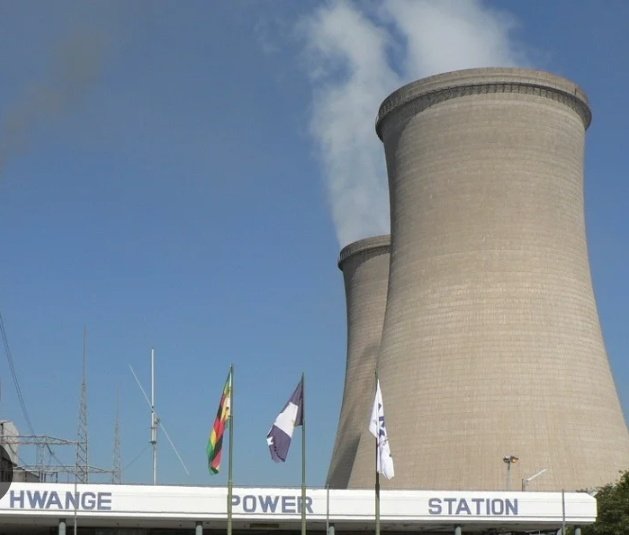Hwange Power Station’s Unit 7 back online, boosts national grid by 300MW! After a month-long period of Class C maintenance, Hwange Thermal Power Station’s Unit 7 has successfully rejoined the national grid, reinstating 300 megawatts (MW) of electricity. This reconnection is a significant step in stabilizing Zimbabwe’s power supply, particularly as the nation approaches the festive season.
Hwange Power Station’s Unit 7
Restoration of 300 MW Following Class C Maintenance
Unit 7’s recent maintenance period involved Class C servicing, a type of preventive maintenance that ensures the plant’s reliability and efficiency. The Zimbabwe Power Company (ZPC) utilizes these planned outages to conduct routine inspections and minor repairs, allowing potential issues to be identified and addressed before they escalate into unplanned outages.
During this maintenance period, Unit 8 served as the primary source of electricity for Hwange, compensating as much as possible for Unit 7’s downtime. However, with the addition of low output from the Kariba South Power Station, the reduced electricity supply led to widespread load-shedding across the country.
Ministerial Statement: Load-Shedding Expected to Ease
Energy and Power Development Minister Edgar Moyo voiced optimism about the reduction in load-shedding following the reconnection of Unit 7. Speaking to State media, Minister Moyo said, “I understand that Unit 7, which has been off the grid for the past few weeks, will be reintroduced on the grid today (Friday). This means we expect load-shedding to ease as we head into the festive season.”
Minister Moyo added that Unit 8 is also scheduled for Class C maintenance, expected to take place in January or February next year. In the meantime, the availability of both Unit 7 and Unit 8 should provide a more stable electricity supply, easing the burden of load-shedding for Zimbabweans over the next few months.
Power Generation Capacity and National Demand
Despite the recent improvement, Zimbabwe’s power generation capacity continues to fall short of the national demand. As of last Friday, Zimbabwe’s total power generation stood at approximately 866MW, sourced from Hwange, Kariba, and independent power producers. Hwange contributed 639MW, Kariba generated 184MW, and independent power producers added 43MW to the grid.
Zimbabwe’s peak demand, however, remains much higher at 1,800MW, indicating a substantial shortfall of nearly 1,000MW. This gap underscores the ongoing challenges Zimbabwe faces in meeting its energy needs, which continue to necessitate load-shedding and energy conservation measures.
Hwange Refurbishment Project: A Path to Increased Capacity
In an effort to address the persistent power shortfall, the ZPC has embarked on a major refurbishment project for Hwange’s six older units. The initiative is supported by a US$300 million loan facility from the Export-Import Bank of India, aimed at restoring the plant’s older units to optimal functionality.
These refurbishments are expected to not only increase Hwange’s generation capacity but also enhance the overall reliability of the country’s power supply. This development is vital for Zimbabwe’s economic and social well-being, as consistent energy access is crucial for industrial production, business operations, and daily life.
Implications for Zimbabwe’s Energy Sector
The reconnection of Unit 7 is a positive milestone that promises some short-term relief for consumers and businesses alike. However, with peak demand far outpacing current generation, Zimbabwe remains in a precarious energy situation. The nation’s reliance on multiple power sources, including Hwange and Kariba, coupled with international loans for plant refurbishments, reflects an ongoing challenge in securing sufficient and stable power.
With both Units 7 and 8 now operational, there is hope that load-shedding will lessen, especially as Zimbabwe prepares for the upcoming festive season. The government’s commitment to continued maintenance and refurbishment of existing facilities at Hwange and other locations is a step toward closing the demand-supply gap, but achieving full energy stability will require a sustained focus on upgrading infrastructure and exploring additional sources of renewable energy.
Looking Forward
The recent developments at Hwange Thermal Power Station demonstrate Zimbabwe’s dedication to tackling its energy crisis. The gradual refurbishment of Hwange’s older units, along with planned maintenance schedules, reflects a strategic approach to stabilizing Zimbabwe’s electricity supply in the short to medium term. While the recent reconnection of Unit 7 offers hope, it also highlights the need for continued investment in the nation’s energy infrastructure.
Achieving reliable power generation remains critical to supporting economic growth and meeting the demands of Zimbabwe’s populace.
